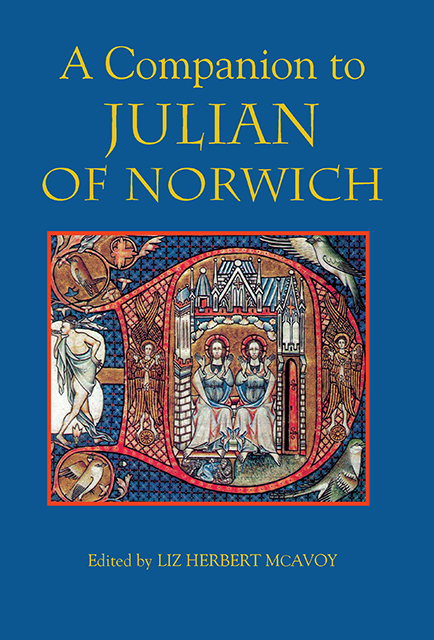10 - The Seventeenth-Century Manuscript Tradition and the Influence of Augustine Baker
Published online by Cambridge University Press: 10 March 2023
Summary
Although she wrote from the isolation of an anchoritic cell, Julian aimed at some form of publication, where ‘ “publication” is short for public conversation.’ In her Revelation she insists on an audience: the visions are for the good of all her fellow Christians. But evidence about the circulation and readership of Julian’s text in the first two centuries of its life is extremely limited and ambiguous. And the Long Text presents particular difficulties: although the Short Text is preserved entire in the medieval ‘Amherst’ manuscript, London, British Library, MS Additional 37790, the only manuscript witness to the Long Text which might be considered medieval – Westminster Cathedral Treasury MS 4 – contains only a limited number of short extracts, in an order different from that in which they appear in the Long Text and, in the estimation of Edmund Colledge and James Walsh, written in ‘colourless’ English. It is not clear how easily medieval or Renaissance readers could have had access to the full Long Text, nor how closely any circulating text would have resembled what the medieval anchoress wrote.
The earliest manuscripts in which the Long Text survives in its entirety belong to the seventeenth century: at some frustratingly undeterminable point before this a copy, or copies, passed into the hands of Benedictine nuns. It is possible that A Revelation went into exile with religious communities during the Reformation, since the extant Long Text manuscripts were owned by and probably copied in English Benedictine houses in France. Paris, Bibliothèque Nationale Fonds Anglais MS 40, is early seventeenth-century: it was preserved and possibly produced by the nuns of Our Lady of Consolation in Cambrai. British Library Sloane MS 2499 (Sloane 1) is also early seventeenth-century and is a much plainer manuscript, possibly in the hand of Clementina Carey who founded Cambrai's daughter house in Paris, Our Lady of Good Hope. British Library Sloane MS 3705 (Sloane 2) is later seventeenth-century. These three manuscripts each contain the full Long Text of A Revelation, and that alone: together with a printed version published in 1670 by Serenus Cressy, based on the Paris manuscript, they are the earliest surviving versions of the full Long Text. The Long Text as it now survives is therefore a seventeenth-century text – or rather, texts, since the Paris manuscript preserves a markedly different version of A Revelation from that found in the Sloane manuscripts.
- Type
- Chapter
- Information
- A Companion to Julian of Norwich , pp. 127 - 138Publisher: Boydell & BrewerPrint publication year: 2008

